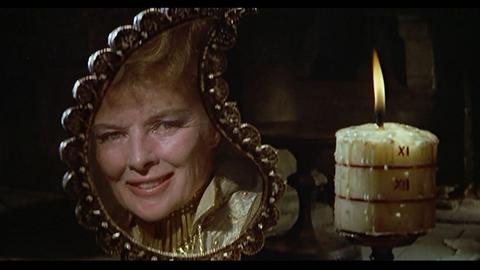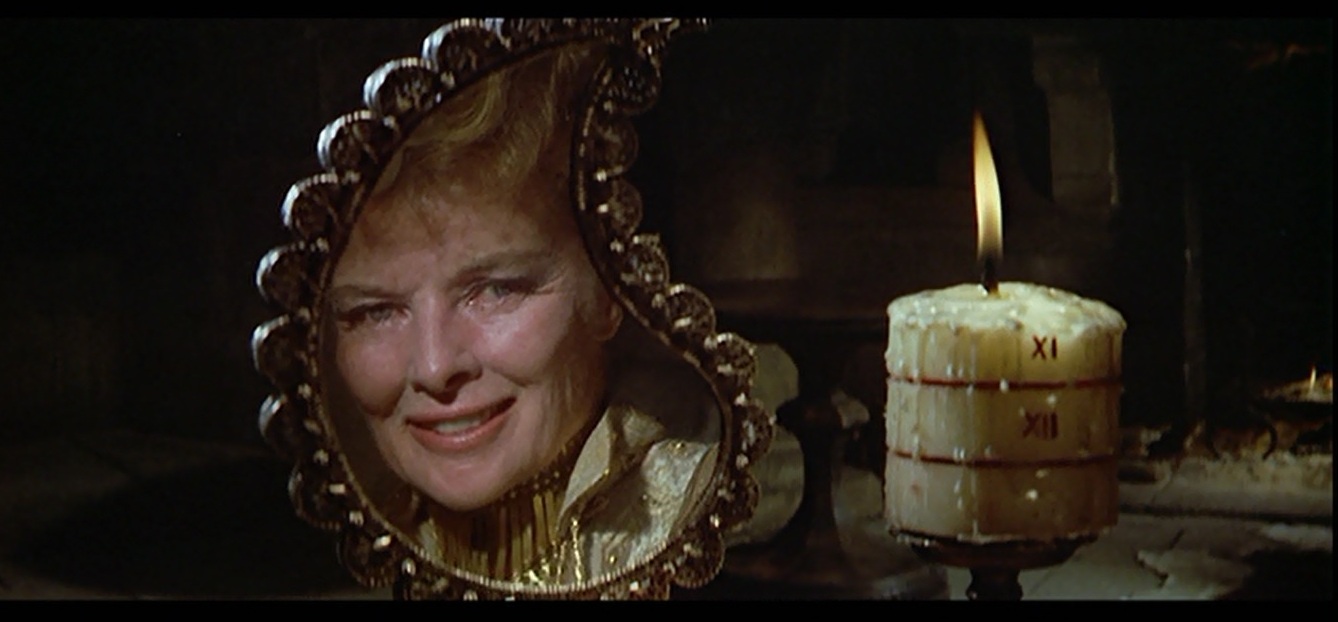
James Harrison
on Mon 4 July 2016Up Close and Personal: Anthony Harvey and The Lion in Winter
Posted on Mon 4 July 2016

The Lion in Winter (1968) can be found on a long list of historical, period films that were made in the 1960s. El Cid (1961), Tom Jones (1963), Cleopatra (1963), Becket (1964), The Fall of the Roman Empire (1964), Zulu (1964), Khartoum (1966), Far From the Madding Crowd (1967), The Long Duel (1967) and The Charge of the Light Brigade (1968). Some of these titles are very much set within the Hollywood Epic genre, while others tried to make themselves out to be part of a ‘floundering film’ genre. When it comes to Anthony Harvey’s The Lion in Winter it most certainly isn’t a Hollywood Epic; in fact, the film goes out of its way not to be one - there is far more to it than that.
The film isn’t bold or brash about what it is - if anything, it is far more intimate than all of the films mentioned above. In fact, I have always wondered if the film could be the result of combining a 1960s period drama with a 1950s or 1960s British New Wave film. But could a film like The Lion in Winter really be a late hangover of the British New Wave? At times it certainly has the feel of an early kitchen sink drama. But the film also has swords and knee-length tunics…
If you strip away all of those period drama elements all that’s left are the issues of a quarrelsome family; the equivalent of THAT family next door. The twist being that this particular family are a 12th Century Royal Family. “I found it [the screenplay] extraordinary in its penetrating observations of loneliness and the failure of human beings to communicate at the most vital moments of their lives,” Director Harvey later told film critic David Robinson “There are people who love each other very much but keep missing each other in the darkness… At the same time this is an extraordinary family of juvenile delinquents.”
Originally written by American playwright James Goldman for his Broadway play of the same name, Goldman’s play came to the attention of actor Peter O’Toole who saw the possibility of adapting it into a film. After reading the adapted screenplay (also written by Goldman) O’Toole, at the height of his fame after being nominated for two Oscars within the course of three years; one for David Lean’s Lawrence of Arabia (1962) the other for his first portrayal of Henry II in Peter Glenville’s Becket (1964) (O’Toole actually ended up being nominated four times for an Oscar within the course of the 1960s alone) first approached his friend and champion Katharine Hepburn and suggested she should play Henry’s estranged wife Eleanor of Aquitaine. Hepburn, still grieving from the death of Spencer Tracy a few months before, agreed immediately. She apparently called O’Toole in London stating “Do it before I die!” With Hepburn confirmed it was easy enough to establish the rest of the incredibly colourful and (at points) rather young cast. In the end, the pair starred alongside up-and-coming actors such as Bristol born Nigel Terry, John Castle, Jane Merrow, Anthony Hopkins and Timothy Dalton (starring in his first feature film). But who would be the best person to direct the film?
Born in London, Anthony Harvey had his first taste in filmmaking as a child actor when making his first and only screen appearance in Gabriel Pascal’s Caesar and Cleopatra (1945). Realising he wasn’t cut out to be an actor after his time spent at R.A.D.A (Royal Academy of Dramatic Art, London), Harvey became involved with the Crown Film Unit before jumping into the editor’s chair and working alongside the likes of the Boulting Brothers, Stanley Kubrick, Martin Ritt, Anthony Asquith and Bryan Forbes on celebrated films such as I'm All Right Jack (1959), The L-Shaped Room (1962), Lolita (1962), Dr. Strangelove Or: How I Learned to Stop Worrying and Love the Bomb (1964), The Spy Who Came in From the Cold (1965) and The Whisperers (1967). By the time he directed his first film, Dutchman (1967), Harvey was more than confident about what he wanted and needed when it came to directing a film, an advantage he was able to take from his time in the editor’s seat.
It was after seeing Dutchman that O’Toole took an interest in the thirty-five-year-old director and suggested they work together. Within a couple of weeks Goldman’s screenplay was handed over to Harvey. Initial agreements were made including the promise from Producer Joseph E. Levine to give Harvey almost total independence to make the film the way he wanted; more than likely something O’Toole forced Levine to agree to. After reading the screenplay, Harvey had some idea what he wanted to do: keep the action close and personal and focused on the performance.
“To me the interesting thing about films are faces and people,” Harvey remarked. “I think if you can get a really fine performance, to hell with the cut, to hell with the over complex tracking shot. I’d even go for lousy lighting as long as the motion of that performance works.” Such a statement from a filmmaker gives a general idea about what concerned Harvey. He further stated, “There’s a good example in Lion in Winter; in a scene where Katharine Hepburn is lying on the bed. She radiated an extraordinary sexuality and although the scene was only supposed to go up to a certain point, she and Peter O’Toole became so carried away that we followed them around and went beyond the lights and still went on shooting. And in fact a lot of it was usable. That rarely happens,” Yet, Harvey concludes “With luck, however, one can get both [editing, cinematography] because I do believe film should look extraordinary.” When it came to The Lion in Winter he was more than lucky when it came to the cinematography. He had Douglas Slocombe!
Slocombe was a veteran even before he walked onto the set of The Lion in Winter and yet, as always, this film brought new challenges for him. For The Lion in Winter keeping the look of the film together while jumping from classic period sets to scenes on location in Wales, France, Ireland and in the Ardmore Studios in Kilbride, was majorly important. For this, Slocombe wanted the darkness, light, shadow and colour to work together to establish the atmosphere of a 12th Century drama without making every scene look like a painting. On top of all this, Harvey wanted to let the performances take centre stage. Thankfully, because he had Slocombe, it was possible.
Set to Slocombe and Harvey’s vision is John Barry’s stupendous score - a very different take from his previous work on the Bond films and his first Academy Award winning score for Born Free (1966). There is a hint of traditional Barry from the outset, however, with the characteristic blaring trumpets. But, aside from that, the soundtrack is an entirely different beast. The choral element throughout the film, something of a rarity at this point in Barry’s career, is either used extraordinarily lightly or incredibly heavily. Either way, Barry, who had also worked on Harvey’s Dutchman, reinforced the tone of what both director and cinematographer were creating. Establishing a sense of intimacy through its score, as well as hitting the sharp notes is what affords Barry’s soundtrack with balance and a variety of dramatic tones. At the same time, the score upscales the overall feel of the film, transforming it into a much bigger picture than it actually is. A key example of this is the very simple opening title sequence overlaid with Barry’s mind blowing main title theme - it blows me away every time! Who knows what it is going to be like when I hear it for the first time in this new restoration on the big screen!
O’Toole’s gamble with Anthony Harvey paid off. The Lion in Winter was a box office success and the film received seven Academy Award nominations in 1969 including Best Picture, Best Director, Best Actor and Best Costume Design while James Goldman won for Best Screenplay Based on Material from Antoher Medium, Katharine Hepburn received her third Oscar (though she famously shares the award with Barbra Streisand for her role in Funny Girl, 1968) and a second Oscar for John Barry for Best Music, Original Score for a Motion Picture. Incredibly, Douglas Slocombe didn’t even receive an nomination for his work on the film.
The Lion in Winter stands as a clear example that, in an age of big cinema, you can still make an intimate film of grand proportions. In her 1968 review for Sight and Sound, critic Brenda Davies concluded, “In The Lion in Winter he [Anthony Harvey] has made memorable half a dozen faces and given them identities which, though they may not match historical reality, will linger in the imagination.” With the help of cast and crew, Anthony Harvey has been able to keep these faces in our imagination for nearly half a century and, with this brand new restoration, it will continue for another half a century.
Written by James Harrison of South West Silents.
The Lion in Winter screens on Thursday July 28 at 6pm with an introduction from writer and broadcaster Matthew Sweet. Presented on DCP from a new 4K scan with thanks to StudioCanal.
